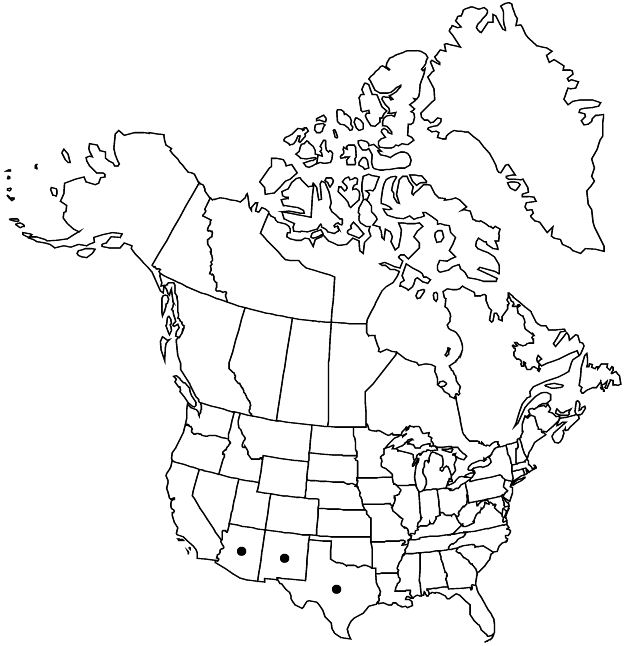Euphorbia capitellata
Rep. U.S. Mex. Bound. 2(1): 188. 1859.
Herbs, annual or perennial, with slender to thick and woody rootstock. Stems usually ascending (but ranging from decumbent to erect), 15–50 cm, glabrous, strigillose, or pilose. Leaves opposite; stipules distinct, filiform or divided into 2–3 subulate-filiform segments, without dark, circular glands at base, 0.6–1.5 mm, pilose; petioles 0.6–1.3 mm, glabrous, pilose, or strigillose; blade ovate to narrowly ovate, 4–19 × 2–8 mm, base asymmetric, one side strongly cordate, other side rounded to slightly cordate, margins entire or serrulate (commonly nearly entire with few scattered teeth, often slightly thickened), apex acute, surfaces often with red spot in center, glabrous, pilose, or strigillose; weakly 3-veined from base, usually only midvein conspicuous. Cyathia in dense, terminal capitate glomerules, with reduced, bractlike leaves subtending cyathia, at tips of main stems and short, leafy, axillary branches; peduncle 0.1–1.2 mm. Involucre narrowly obconic to narrowly campanulate, 0.8–1.6 × 0.7–1.3 mm, glabrous or pilose; glands 4, yellow-green to pink or maroon, circular to oblong, 0.2–0.4 × 0.2–0.5 mm; appendages white to light pink, oblong to reniform or flabellate, 0.2–1.1 × 0.5–1.7 mm, surfaces glabrous, distal margin entire. Staminate flowers 25–40. Pistillate flowers: ovary glabrous or pilose; styles 0.4–0.6 mm, 2-fid entire length. Capsules ovoid to oblate, 1.3–1.9 × 1.4–2.1 mm, glabrous or pilose; columella 1.1–1.7 mm. Seeds pink to pinkish gray, narrowly ovoid to narrowly ovoid-oblong, 4-angled or weakly 3-angled in cross section, 0.9–1.5 × 0.5–0.7 mm, irregularly dimpled, sometimes also with faint transverse ridges that do not pass through abaxial keel. 2n = 14.
Phenology: Flowering and fruiting year-round in response to sufficient moisture.
Habitat: Gravelly washes, rocky slopes, basaltic talus, disturbed roadsides, primarily desert scrub, desert grasslands, riparian forests, rarely oak-juniper woodlands.
Elevation: 600–1600 m.
Distribution

Ariz., N.Mex., Tex., Mexico (Baja California, Baja California Sur, Chihuahua, Coahuila, Sinaloa, Sonora).
Discussion
Euphorbia capitellata is a characteristic herb in the Sonoran Desert of southern Arizona, ranging east to extreme southwestern Texas. During peak flowering, plants are attractive due to the dense clusters of cyathia with well-developed involucral gland appendages.
Selected References
None.